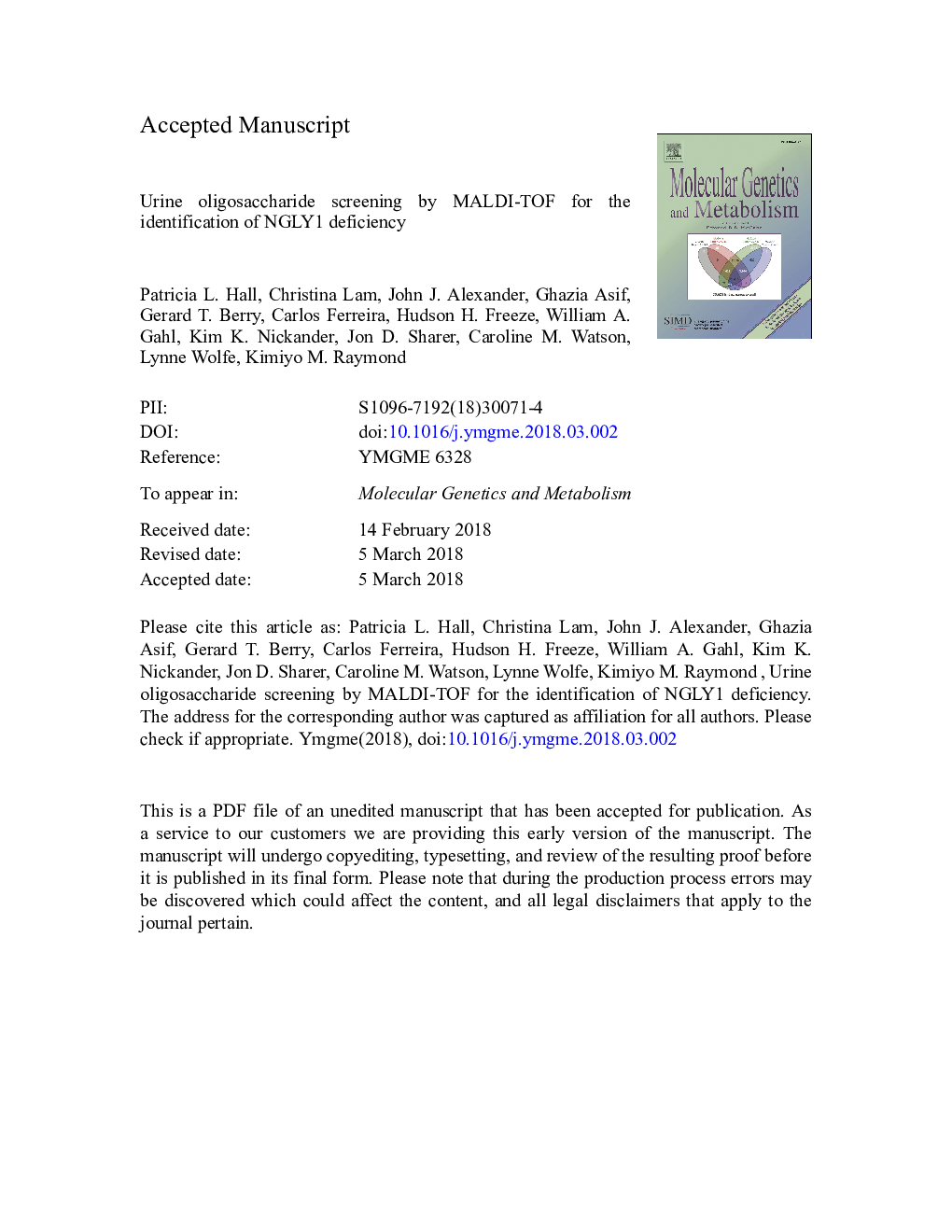| Article ID | Journal | Published Year | Pages | File Type |
|---|---|---|---|---|
| 8343007 | Molecular Genetics and Metabolism | 2018 | 19 Pages |
Abstract
N-glycanase deficiency (NGLY1 deficiency, NGLY1-CDDG), the first autosomal recessive congenital disorder of N-linked deglycosylation (CDDG), is caused by pathogenic variants in NGLY1. The majority of affected individuals have been identified using exome or genome sequencing. To date, no reliable, clinically available biomarkers have been identified. Urine oligosaccharide analysis was included as part of a routine evaluation for possible biomarkers in patients with confirmed NGLY1-CDDG. During the qualitative review of oligosaccharide profiles by an experienced laboratory director an abnormal analyte with a proposed structure of Neu5Ac1Hex1GlcNAc1-Asn was identified in NGLY1-CDDG patient urine samples. The same species has been observed in profiles from individuals affected with aspartylglucosaminuria, although the complete spectra are not identical. Additional studies using tandem mass spectrometry confirmed the analyte's structure. In addition to the known NGLY1-CDDG patients identified by this analysis, a single case was identified in a population referred for clinical testing who subsequently had a diagnosis of NGLY1-CDDG confirmed by molecular testing. Urine oligosaccharide screening by MALDI-TOF MS can identify individuals with NGLY1-CDDG. In addition, this potential biomarker might also be used to monitor the effectiveness of therapeutic options as they become available.
Keywords
Related Topics
Life Sciences
Biochemistry, Genetics and Molecular Biology
Biochemistry
Authors
Patricia L. Hall, Christina Lam, John J. Alexander, Ghazia Asif, Gerard T. Berry, Carlos Ferreira, Hudson H. Freeze, William A. Gahl, Kim K. Nickander, Jon D. Sharer, Caroline M. Watson, Lynne Wolfe, Kimiyo M. Raymond,
